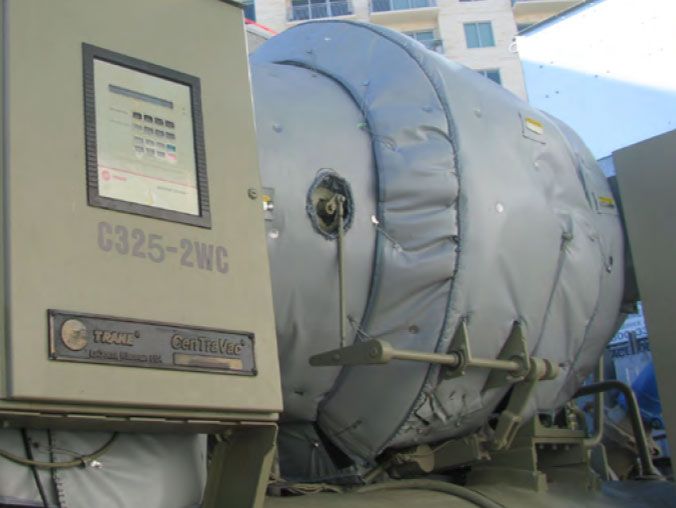If you’re looking for a way to reduce chiller noise, or noise energy in general, a properly fitted acoustic blanket is one solution. For example, the State University of New York at Oneonta covered two compressors on a Trane Model RTAA Rotary Liquid Chiller with reusable acoustic blankets to reduce chiller noise affecting classes in one of the college’s buildings. Once covered, the acoustic blankets reduced the noise from the compressors by 6 dBA.
Just covering a compressor isn’t enough to reduce chiller noise, though, unless an insulation maker also pays attention to equipment geometry. That means ensuring there are no gaps between the reusable insulation and the component covered. Any gap helps sound energy escape the blanket. So, if you’ve covered your components or equipment with acoustic blankets and still hear noise, then it may be the result of a few (possibly several) gaps between the insulation blankets.
Reducing sound pressure with a reusable acoustic blanket is more complex than preventing the loss of thermal energy. Manufacturers measure sound pressure in decibels; it’s a logarithmic scale. For example, if a sound is 80 dB and it decreased by 6 dB, then it’s 50 percent lower sound pressure. Also consider that a 6 dB reduction in sound could mean more than a 50 percent drop for the person hearing the noise. In other words, small changes in sound pressure make a significant impact on hearing.
The objective with a properly fitted reusable acoustic blanket is to focus on the 800 to 4,000 Hz peak sound levels and shave off the high frequency sound to reduce chiller noise or the noise emanating from any other type of component. There are important reasons to opt for acoustic insulation such as:
- addressing ordinances and zoning laws;
- reducing sound intensity to eliminate hearing protection for workers; and
- improving conditions for residential communities near a facility.
When considering acoustic insulation, a facility manager should work with an insulation manufacturer who’s trained to carefully measure and inspect a noisy component or machine. An experienced insulation maker can make recommendations, if needed, for decoupling the noise-making machine from the ground with a vibration isolation device like a shock absorber, spring or wire rope isolator. Making the insulating process highly successful requires reducing the transfer of sound pressure to other locations within or across a machine. For instance, residents and officer workers in surrounding buildings can hear a roof top chiller, especially if situated on a taller building.
If your aim is to reduce chiller noise or the sound emanating from any other type of component, take these steps today.
- First, download a free decibel meter app like the NIOSH Sound Level Meter. Determine a measure for what you’re hearing and compare that to OSHA permissible noise exposures.
- Next, inspect the machine you’re going to insulate. Does it appear to be decoupled and isolated from its surroundings, or is its simply bolted to a roof, concrete pad or wall?
- Third, contact an acoustic insulation blanket maker who designs products in accord with ANSI/AHRI Standard 575.
And for contractors or manufacturers of HVAC equipment, including acoustic insulation with a product can be a benefit or selling point, since acoustic insulation will make an equipment maker’s product quieter then a competitor’s machine.

